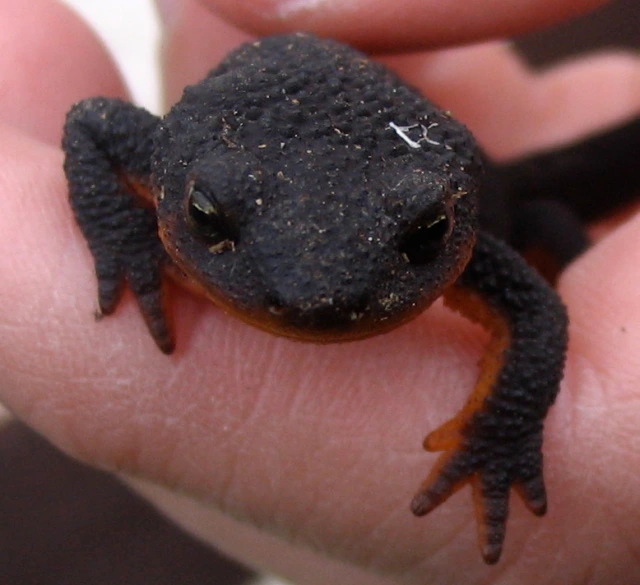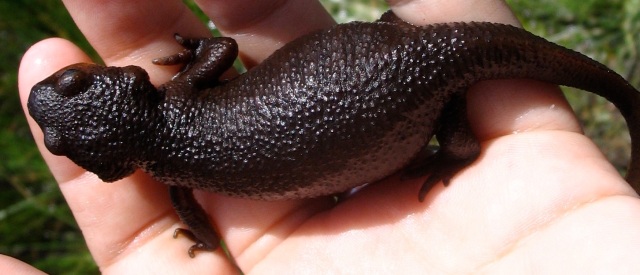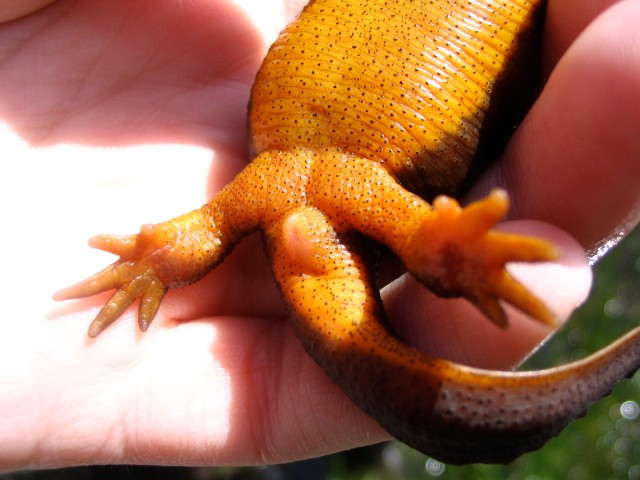California slender salamanders are a great amphibian species to watch and learn from. They are pretty easy to find; they are relatively common and will almost always be found in the same area day after day. Most of the time, you can find these salamanders within 2 meters of the place you first spotted them and in one study, 59% of the time they were even spotted underneath the same piece of covering. That was certainly the case for several salamanders that I was watching between classes at SFSU, including this beautiful salamander shown above. You can find these guys under rotting logs or wood, sometimes under large flat rocks or even just under a thick pile of leaf litter-moist areas. From late spring through the summer, they might be harder to find, because they tend to go underground when things dry up. They are one of the few salamanders that are skinny enough to crawl into termite tunnels and earthworm burrows. They’ll also go underground sometimes to forage-they will eat spiders, mites, insects, earthworms and snails.
If you’re getting to know your local slender salamanders, keep in mind that they are most active at night. Also, if you’d like to handle them, here are a few suggestions:
1. Be gentle. Try putting your hand near them and encouraging them to walk on you rather than picking them up. If they are coiled up, then try scooping them from underneath rather than picking them up from above.
This might seem obvious, but it’s especially important with salamanders because if they are adequately disturbed, this might happen:
Salamanders will “drop” their tail if they are threatened, to help them get away. Their tail will regenerate, but it can take between 1 and 3 years. This salamander is in the process of regrowing its tail (This happened before I found it-it wasn’t me I swear!) and wasn’t doing too well when I last checked on it.
2. Don’t wear any perfume, lotions, bug repellents or sunscreen. Since amphibians have permeable skin, these things can harm them. Also, these particular salamanders don’t have lungs or gills, but breathe through their skin and the membranes in their mouth or throat, so you don’t want to gunk up their skin with lotion.
3. Moisten your hands, but be sure NOT to use regular tap water. If you go to a pet store and purchase a dechlorination liquid (very cheap bottle, used for fish tanks), put a few drops in a spray bottle of water and then spray your hands. This way the salamanders won’t dry out while you hold them. This is true for all amphibians you handle. They will be more comfortable if you do this. You can also rub your hands in whatever moist area you find them in, which will help a little as well.
If you follow these steps, then you can enjoy your salamander friends without stressing them too much or harming them. Also, keep in mind that many amphibians will secrete substances that some people are allergic or are sensitive to.
Speaking of which-one of the cool things I came across while learning about this salamander was an observation by a scientist who was working with these animals in lab conditions. He was trying to learn about anti-predator mechanisms for this species. Of course he came across the usual things-they drop their tails, or these amphibians will flip themselves to push themselves away from the threat and then sit still. But, when one salamander was exposed to a garter snake, it prevented being eaten by looping its tail around the snake’s head, forming a knot. Then the salamander released an adhesive skin secretion that glued the snake’s jaw shut for 48 hours. Salamander win!
And now, here’s one last shot of a beautiful California slender salamander:























